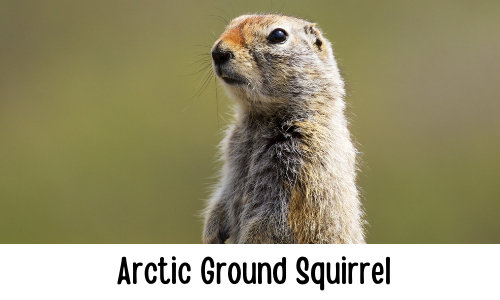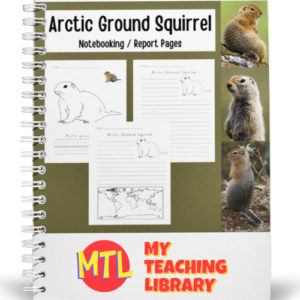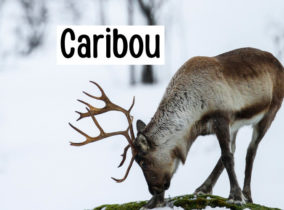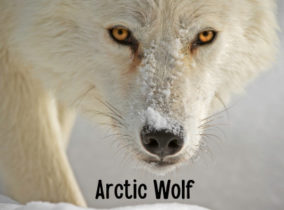| Scientific classification | |
|---|---|
| Kingdom: | Animalia |
| Phylum: | Chordata |
| Class: | Mammalia |
| Order: | Rodentia |
| Family: | Sciuridae |
| Genus: | Urocitellus |
| Species: |
U. parryii
|
General Description of the Arctic Ground Squirrel
Arctic ground squirrels live in Alaska, Canada and Siberia. They are the largest of all ground squirrels in North America, ranging 13-19.5 inches in length and 1.1-3.3 pounds, with males larger than females. They are tawny brown in color, with white flecks on the dorsal (back) side and light tan or beige on their undersides. In the winter, their undersides lighten up. Their bodies are cylindrical in shape, with short but strong forearms and hind legs, and sharp claws making them built for burrowing and digging. Their heads and ears are rounded, and their tails are relatively short compared to other squirrel species.
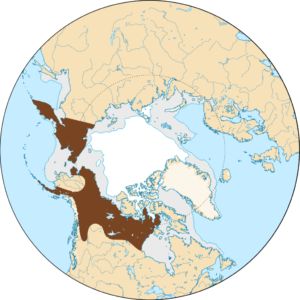
Range
The arctic ground squirrel is the only species of ground squirrel in Alaska, where they can be found across northern, eastern, and southwestern Alaska at elevations ranging from sea level to well above mountain tree lines. They inhabit tundra, meadow, riverbank, and lakeshore habitats with loose soils that provide early vegetation. They sometimes den in soft sandy soils along the coast where they may drown in unusually high fall storm surges or easily be dug up for a grizzly’s meal.
Life History
Arctic ground squirrels live on average 8–10 years. For about eight months of the year, arctic ground squirrels hibernate to cope with the harsh winter conditions. Females begin hibernating in August, with males following over the next month. Males emerge from hibernation about 3 weeks earlier than females in order to reach sexual maturation. During hibernation, they enter into a state of torpor, in which their metabolic rate and body temperatures drastically drop for up to 3 weeks at a time. Body temperatures drop from about 99 degrees F to as cold as 27 degrees F. Between these states of torpor they arouse for 1-2 days to raise their body temperature back up to the mid 90os. By the time they emerge from hibernation, arctic ground squirrels will have lost approximately 1/3 of their body weight, with females losing more weight than males.
Mating season begins in late April to early May, after squirrels emerge from hibernation. After breeding, females group together in kin clusters, possibly to protect against predators. After a gestation period of 25-30 days, females give birth to a litter of 2-10 young. At birth, offspring are blind, hairless, and toothless, but grow rapidly for the first few weeks, and by age 8-10 weeks, the young disperse from the den, and are sexually mature by the following spring.
Diet
Arctic ground squirrels are highly opportunistic feeders and feed on vegetation such as stems and leaves, roots, fruits, seeds, flowers, grasses and sedges, and other green or woody plants, as well as mushrooms. They are also known to eat eggs, invertebrates, and small vertebrates including juvenile snowshoe hares, collared lemmings, and even their own young. Food is stored or cached only by male arctic ground squirrels in burrows for arousal from winter hibernation.
Threats/Concerns
The biggest concerns for arctic ground squirrels are their myriad of predators, including golden eagles, gyrfalcon, rough-legged hawk, ermine, wolves, arctic fox, grizzly bear, and humans who hunt them or destroy their habitat.
If you would like to have students create a report on these cute little creatures, check out My Teaching Library’s ‘Arctic Ground Squirrel Notebooking pages‘!
Students will love using this product to create a report on the cute, Arctic ground squirrel that lives in Alaska, Canada and Siberia! Perfect to use during a study of the arctic region, tundra animals or as a cross-curricular unit that will have students reading, writing, completing map work (geography) and learning about the life of this cute little squirrel (science).
________________________
>> Learn more about My Teaching Library! <<


